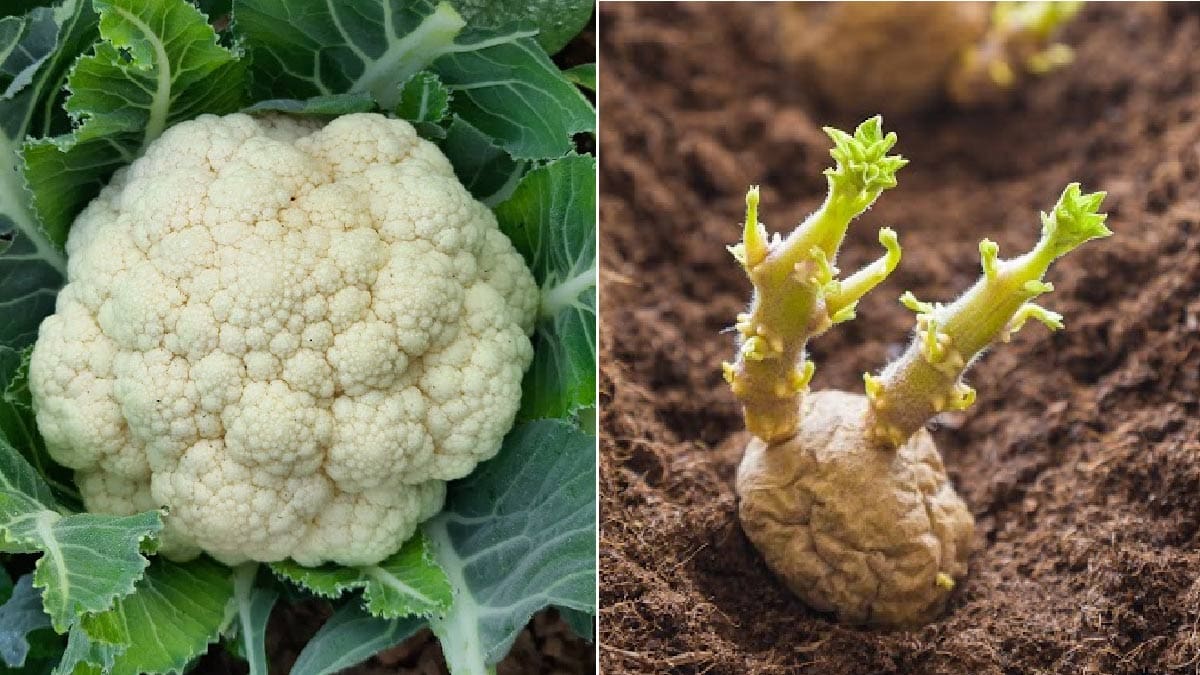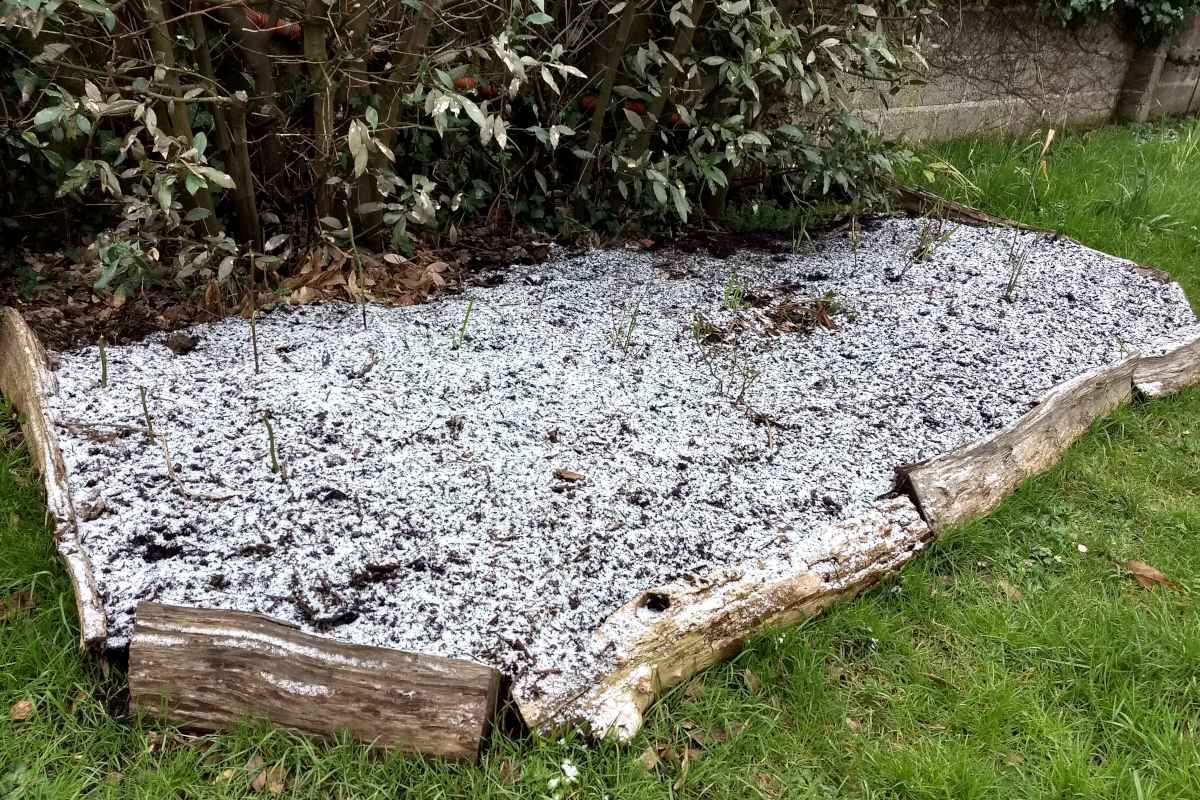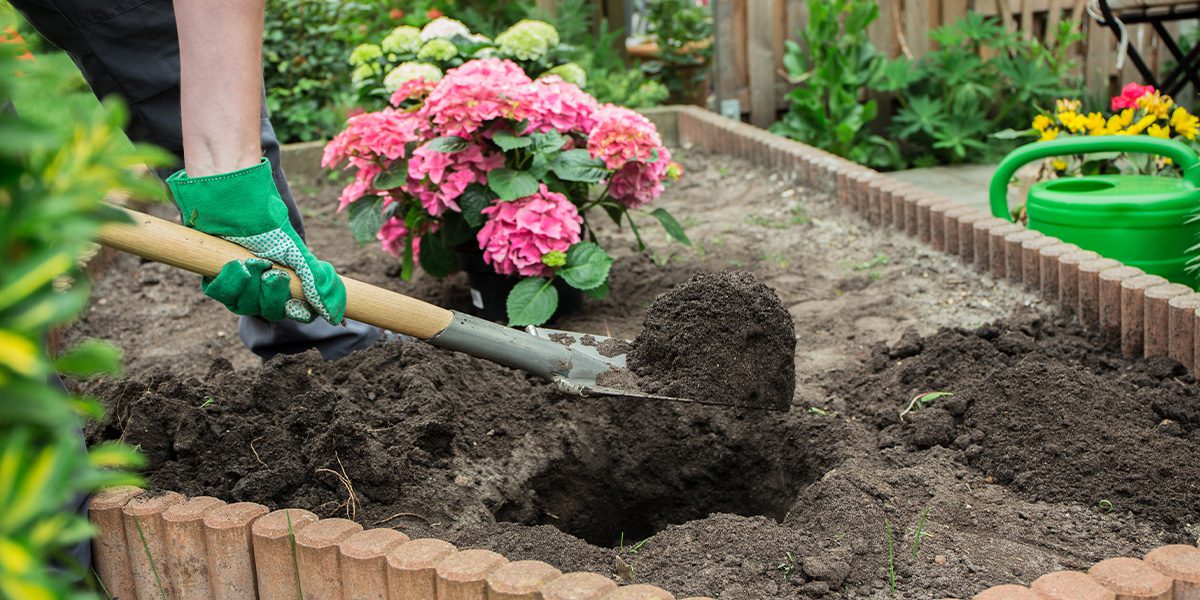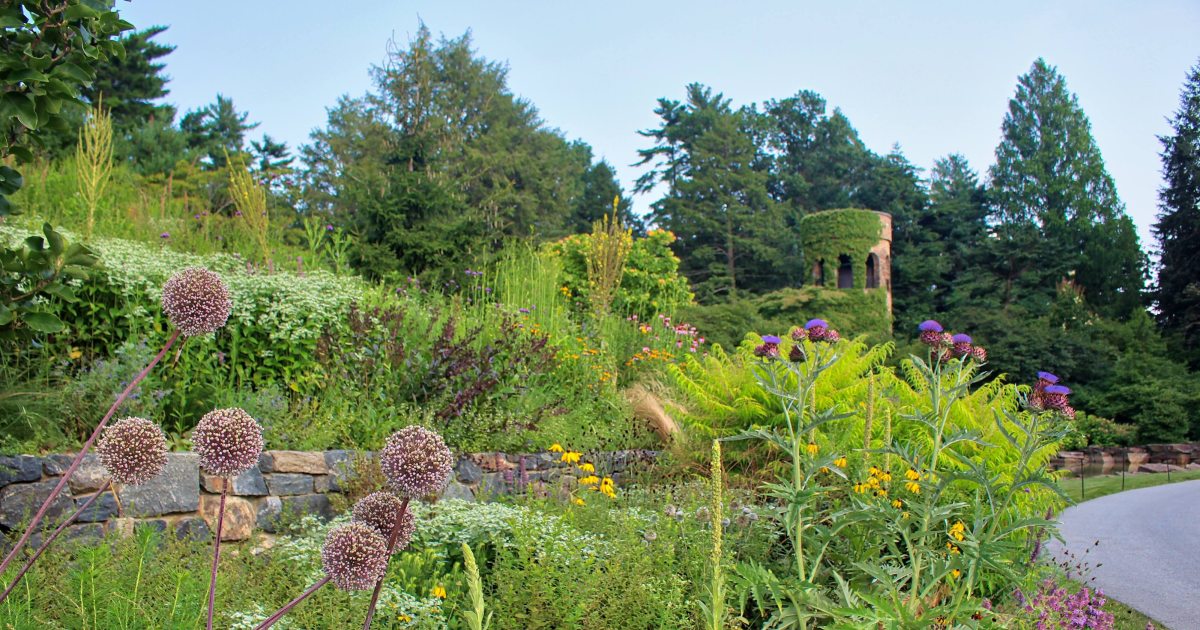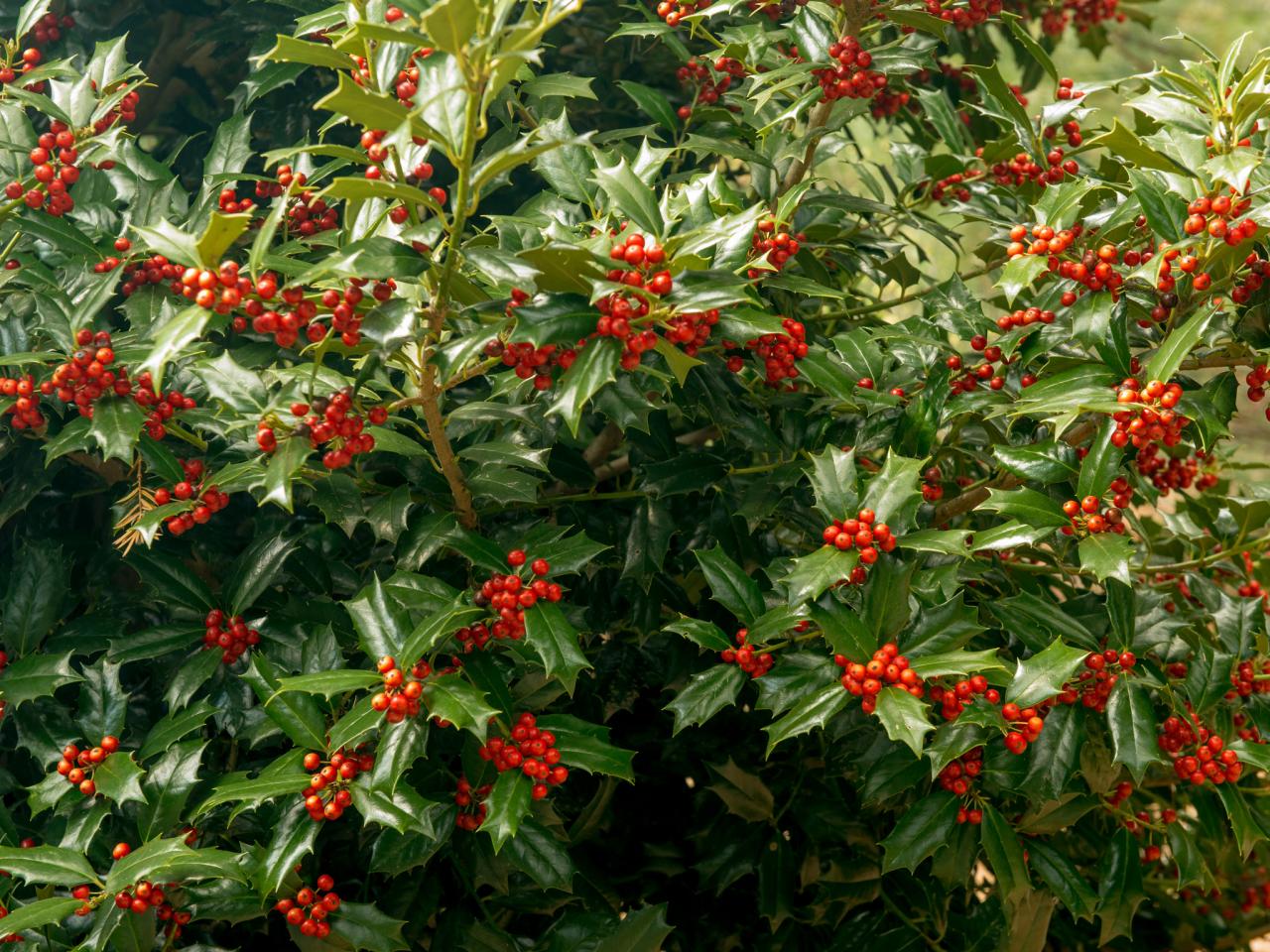Home>Gardening Basics>Understanding Soil>How To Plant Shrubs In Clay Soil


Understanding Soil
How To Plant Shrubs In Clay Soil
Published: February 12, 2024
Learn how to successfully plant shrubs in clay soil by understanding the unique challenges and techniques required for this type of soil.
(Many of the links in this article redirect to a specific reviewed product. Your purchase of these products through affiliate links helps to generate commission for Chicagolandgardening.com, at no extra cost. Learn more)
Table of Contents
Introduction
Welcome to our comprehensive guide on how to plant shrubs in clay soil. If you’ve ever tried to grow plants in clay soil, you may have encountered some challenges. Clay soil, characterized by its heavy and compact texture, can be difficult for plants to thrive in due to its poor drainage and lack of nutrients. However, with some proper preparation and knowledge, you can successfully cultivate beautiful shrubs in clay soil.
Clay soil is rich in minerals and has the potential to support healthy plant growth. However, its dense composition can cause water to pool and drain slowly, leading to waterlogged roots and the risk of root rot. Additionally, clay soil tends to become hard when dry and clumpy when wet, making it challenging for plant roots to penetrate and access the necessary air and nutrients.
Despite these challenges, it is possible to transform clay soil into a fertile environment that can support the growth of shrubs. In this guide, we will walk you through the necessary steps to prepare the soil, choose the right shrubs, and plant them successfully in clay soil. By following these tips and techniques, you’ll be able to create a thriving garden that will bring beauty and enjoyment for years to come.
Whether you’re a novice gardener or an experienced green thumb, this guide will provide you with valuable insights and practical advice to overcome the obstacles commonly associated with clay soil. So, let’s dive in and discover how to turn your clay soil into the perfect home for vibrant and healthy shrubs!
Understanding Clay Soil
Before we delve into the process of planting shrubs in clay soil, it’s important to understand the characteristics and challenges of this soil type. Clay soil is composed of tiny particles that have a tendency to compact and stick together, resulting in a heavy and dense texture. This texture limits the movement of water, air, and nutrients within the soil, making it difficult for plants to thrive.
One of the main challenges of clay soil is its poor drainage. When clay soil becomes saturated with water, it becomes heavy and slow to drain. This can lead to waterlogged roots, as excess moisture sits around the plant’s root system, depriving them of oxygen. This can cause root rot and ultimately hinder the growth and overall health of the shrubs.
Another issue with clay soil is its tendency to become hard and compacted when it dries out. This can make it difficult for roots to penetrate the soil and find the necessary nutrients and moisture. Additionally, the compacted nature of clay soil can hinder root development and restrict the expansion of the plant’s root system.
Furthermore, clay soil is known for its nutrient-retaining capabilities. While this may initially sound like a positive attribute, it can actually result in nutrient imbalances. The clay particles can hold onto essential nutrients, preventing them from being readily available to plants. This means that plants grown in clay soil may require additional fertilization to ensure they receive the necessary nutrients for optimal growth.
Despite these challenges, clay soil does have some positive aspects. It tends to retain moisture better than other soil types, which can be advantageous during dry periods. Clay soil is also rich in minerals, providing a good foundation for plant growth once its drainage and texture issues are addressed.
Now that we have a better understanding of clay soil, let’s explore how to prepare it for successful shrub planting.
Preparing the Soil
Preparing the soil is a crucial step in successfully planting shrubs in clay soil. By taking the time to address the soil’s shortcomings, you can create a more favorable environment for your plants to thrive. Here are some key steps to follow:
- Remove any debris: Start by clearing the area of any weeds, rocks, or other debris that may hinder plant growth. This will give you a clean slate to work with.
- Test the soil pH: Clay soil tends to be more alkaline, so it’s essential to test the pH level. You can use a soil testing kit available at gardening centers or consult with a local agricultural extension service. Based on the results, you can adjust the pH by adding amendments such as sulfur for acidic soil or lime for alkaline soil.
- Break up the soil: The compacted nature of clay soil can make it challenging for plant roots to penetrate and establish themselves. Use a garden fork or a tiller to break up the soil and loosen it. This will improve drainage and allow roots to spread more easily.
- Add organic matter: Clay soil lacks organic matter, which is crucial for healthy plant growth. Incorporate well-rotted compost, leaf mold, or aged manure into the soil. This will improve its structure, increase nutrient availability, and enhance drainage.
- Avoid overworking the soil: While it’s important to break up compacted clay soil, be careful not to overwork it. Excessive tilling can result in a fine, powdery texture that further impedes drainage. Aim for a slightly clumpy texture that allows for proper airflow and drainage.
By following these steps, you’ll be able to create a better environment for your shrubs to establish their roots and access the necessary nutrients. Preparing the soil adequately is an investment in the long-term health and vitality of your plants.
Choosing the Right Shrubs
When it comes to planting shrubs in clay soil, selecting the right plants is essential for their overall success and growth. Not all shrubs will thrive in clay soil, so it’s important to choose varieties that are well-suited to this type of soil. Here are some factors to consider when selecting shrubs for clay soil:
- Drought-tolerant species: Clay soil tends to retain moisture well, so it’s beneficial to choose shrubs that can tolerate occasional waterlogging. Look for plants that have good drought tolerance and can handle periods of wet soil without developing root issues.
- Deep-rooted varieties: Shrubs with deep-rooted systems are better equipped to penetrate the dense clay soil and access nutrients. Look for plants with strong root systems that can withstand the compacted nature of clay soil.
- Native plants: Native shrubs are often well-adapted to the local climate and soil conditions. They have evolved to thrive in the specific conditions of the area, including clay soil. Consider incorporating native shrubs into your garden as they are more likely to flourish and require less maintenance.
- Soil pH requirements: Check the soil pH requirements of the shrubs you’re interested in. Some plants prefer more acidic or alkaline soil, so select shrubs that align with the pH of your clay soil, or be prepared to amend the soil accordingly.
- Growth habits and sizes: Consider the mature size and growth habits of the shrubs. Make sure you have enough space for them to grow without overcrowding or competing with one another. It’s essential to provide enough room for the roots to spread and establish in the clay soil.
- Consult local experts: Seek advice from local nurseries, horticulturists, or gardening associations. They can provide valuable insights into the best shrub varieties for clay soil in your specific region.
By carefully selecting shrubs that are well-adapted to clay soil, you can set yourself up for success right from the start. Choose plants that can tolerate the challenges of clay soil and thrive in these conditions.
Digging the Planting Hole
When it comes to planting shrubs in clay soil, properly digging the planting hole is crucial for ensuring the plants’ successful establishment and growth. Here are some important steps to follow when digging the planting hole:
- Choose the right location: Select the planting location based on the specific needs of the shrub you’ve chosen. Consider factors such as sunlight requirements, soil drainage, and available space for the shrub to grow.
- Measure the hole size: Dig a hole that is wide and shallow rather than narrow and deep. The width of the hole should be two to three times the diameter of the rootball or container. This allows for the roots to easily penetrate the loosened clay soil.
- Loosen the sides: Break up the walls of the hole to further loosen the surrounding clay soil. This will help the roots grow beyond the planting hole and establish themselves in the native soil.
- Amend the soil: Mix in organic matter like compost or aged manure with the native clay soil. This helps improve the soil structure, drainage, and nutrient availability for the shrub.
- Add water: Before placing the shrub in the hole, thoroughly water the hole. This will help create a moist environment for the roots to settle into and encourage proper hydration.
- Position the shrub: Gently place the shrub in the center of the hole at the same depth it was previously growing, making sure not to plant it too deep. The top of the rootball or container should be slightly above or level with the surrounding soil.
- Backfill and firm the soil: Fill the hole with the amended soil mixture, ensuring that there are no air pockets around the roots. Gently firm the soil around the shrub, but avoid compacting it too much.
By following these steps, you’ll create an ideal environment for the shrub’s roots to penetrate the surrounding clay soil and establish themselves. Properly digging the planting hole sets the foundation for successful growth and ensures the shrub’s longevity in the garden.
Amending the Soil
Amending the soil is a crucial step in preparing clay soil for planting shrubs. By incorporating organic matter and other amendments, you can improve its structure, drainage, and nutrient content. Here are some effective techniques to amend clay soil:
- Add compost: Compost is a valuable amendment for clay soil, as it helps improve its texture and drainage. Mix in well-rotted compost into the soil at a ratio of 1:1 or more, depending on the severity of the clay soil. This will increase its organic matter content and enhance its ability to hold moisture while allowing for proper drainage.
- Incorporate aged manure: Aged manure is an excellent source of nutrients for plants and helps improve soil structure. Mix in well-rotted aged manure into the soil, ensuring it is spread evenly and thoroughly incorporated. This will enhance the soil’s fertility and promote healthy plant growth.
- Use organic matter alternatives: If compost or aged manure are not readily available, you can use other organic matter amendments, such as leaf mold, peat moss, or shredded bark. These will help break up the clay particles and promote better drainage and aeration.
- Add coarse sand or perlite: Mixing in coarse sand or perlite can further improve the drainage properties of clay soil. However, it’s important not to overdo it, as adding too much sand or perlite can create a sandy texture that retains too little moisture. Aim for a balanced ratio, incorporating approximately 20-30% of sand or perlite into the soil mixture.
- Consider gypsum: In some cases, where clay soil has high sodium content, applying gypsum can be beneficial. Gypsum helps to break up compacted clay particles and improve drainage. Follow the manufacturer’s instructions for the appropriate quantity and application method.
Remember that amending clay soil is an ongoing process. It’s important to regularly monitor the soil’s quality and make adjustments as needed. Over time, the soil will become more fertile, well-draining, and conducive to the growth of your shrubs.
Planting the Shrubs
Now that you have prepared the soil and amended it accordingly, it’s time to plant the shrubs in your clay soil. Proper planting techniques will ensure the shrubs have the best chance of thriving. Here’s how to go about it:
- Timing: Choose the right time to plant your shrubs. Opt for early spring or early fall when the weather is mild, and the soil is not excessively moist or dry. This will allow the shrubs to establish their roots before facing extreme conditions.
- Preparation: Dig a planting hole as described earlier, ensuring it is wide and shallow. Carefully remove the shrub from its container, gently loosening the roots if they are tightly bound.
- Positioning: Place the shrub in the center of the hole, making sure it is at the same level it was previously growing. Avoid planting it too deep, as this can suffocate the roots and prevent healthy growth.
- Backfilling: Fill the hole with the amended soil mixture, gently firming it around the rootball. Ensure there are no air pockets around the roots. The soil should be level with or slightly above the surrounding soil.
- Watering: Immediately after planting, thoroughly water the shrub to help settle the soil and eliminate any air gaps. Provide enough water to saturate the rootball and the surrounding soil.
- Mulching: Apply a layer of mulch around the base of the shrub, leaving a small gap around the stem to prevent moisture buildup. Mulch helps conserve moisture, suppress weeds, and regulate soil temperature.
- Staking: If the shrub is tall and prone to wind damage, you may need to stake it to provide support. Be careful not to tie the stake too tightly, as it can restrict the natural movement of the shrub.
After planting, monitor the shrubs closely, especially during the first year. Water them regularly, especially during dry spells, to keep the soil consistently moist but not waterlogged. Observe any signs of stress, such as wilting or yellowing leaves, and take appropriate action to address any issues promptly.
Remember, proper planting techniques and attentive care in the early stages will help your shrubs establish strong root systems and ensure their long-term health and vitality in your clay soil.
Mulching
Mulching is an important practice when planting shrubs in clay soil, as it offers several benefits that contribute to the overall health and success of your plants. Mulch is a layer of organic or inorganic material placed around the base of the shrubs, creating a protective barrier. Here’s why mulching is beneficial:
- Moisture retention: Mulch helps to conserve moisture in the soil by reducing evaporation. In clay soil, which tends to retain water, mulching can help regulate moisture levels and prevent excessive drying out or waterlogging. This is especially important during hot, dry periods.
- Weed suppression: A layer of mulch acts as a natural weed suppressant, preventing weed seeds from germinating and competing with the shrubs for nutrients and moisture. This reduces the need for manual weeding and minimizes competition for resources.
- Temperature regulation: Mulch acts as insulation for the soil, helping to regulate its temperature. In hot climates, it keeps the soil cooler, preventing heat stress on the roots. In colder regions, it provides some protection from frost and freezing temperatures.
- Soil improvement: Organic mulches, such as shredded leaves, compost, or wood chips, gradually break down and enrich the soil. As the organic matter decomposes, it adds nutrients to the soil, improves its structure, and enhances microbial activity. This creates a healthier environment for the shrubs’ root systems.
- Erosion prevention: Mulch helps to stabilize the soil and prevent erosion caused by heavy rain or wind. It protects the bare soil surface from the impact of raindrops, reducing soil compaction and the loss of precious topsoil.
When applying mulch, be sure to follow these guidelines:
- Choose the right mulch: Select an appropriate mulch material that suits your landscape and aesthetic preferences. Organic options like wood chips or shredded leaves are generally preferred for their added benefits to the soil.
- Apply an adequate layer: Spread the mulch around the shrub in a layer that is about 2-4 inches thick. Avoid piling mulch directly against the stem, as this can create a moist environment that promotes disease or pest issues.
- Extend the mulch bed: Extend the mulch bed beyond the root zone of the shrub, as this encourages the roots to grow outward and establish in the surrounding soil.
- Refresh the mulch: Mulch gradually breaks down over time, so it’s important to replenish it as needed. Add a new layer of mulch every year or as it begins to thin out to maintain its effectiveness.
By properly mulching your shrubs, you provide them with a favorable growing environment that supports their overall health and helps them thrive in your clay soil.
Watering and Maintenance
Establishing a proper watering and maintenance routine is crucial for the health and vitality of shrubs planted in clay soil. Here are some important factors to consider when it comes to watering and ongoing care:
- Watering: Clay soil tends to retain moisture, so it’s important to strike a balance between keeping the soil consistently moist and avoiding waterlogging. Water the shrubs deeply and thoroughly to encourage deep root growth, but allow the soil to dry out slightly between watering to prevent root rot. Monitor moisture levels regularly and adjust watering based on the weather conditions and the specific needs of the shrubs.
- Deep watering: Encourage deep root growth by watering deeply. Apply water directly to the soil rather than overhead sprinklers, as this allows the water to reach the root zone more efficiently. Consider using drip irrigation or soaker hoses to target the root area and minimize water waste due to evaporation.
- Mulch maintenance: Regularly check the mulch layer around the shrubs to ensure it is intact and at the proper thickness. Mulch can break down over time, so replenish it as needed to maintain a consistent layer. This will aid in moisture retention, weed suppression, and soil improvement.
- Weeding: Monitor the area around the shrubs for any weeds and promptly remove them. Weeds compete with the shrubs for nutrients and moisture, so regular weeding helps prevent them from taking over and impacting the health of your plants.
- Pruning: Prune your shrubs as needed to maintain shape, remove dead or damaged branches, and promote airflow within the plant. Regular pruning encourages healthy growth and can help prevent disease and pest issues. Follow proper pruning techniques for the specific shrub variety you are growing.
- Fertilizing: Clay soil tends to retain nutrients, but it can still benefit from additional fertilization. Apply a slow-release, balanced fertilizer in the spring to provide the shrubs with essential nutrients for healthy growth. Follow the instructions on the fertilizer packaging and avoid over-fertilization, as it can lead to excessive foliage growth at the expense of overall plant vigor.
- Monitoring for issues: Keep an eye out for any signs of stress or potential problems with your shrubs. Look for changes in leaf color, wilting, pest infestations, or disease symptoms. If you notice any issues, take appropriate action promptly, such as adjusting watering, implementing pest control measures, or seeking professional advice if needed.
Maintaining a regular watering and maintenance routine will help your shrubs establish strong root systems, resist diseases and pests, and thrive in clay soil. By providing the necessary care, you’ll be rewarded with healthy, vibrant shrubs that enhance the beauty of your landscape.
Conclusion
Planting shrubs in clay soil may present some challenges, but with the right knowledge and techniques, you can create a thriving garden filled with beautiful and healthy shrubs. Understanding the characteristics and unique needs of clay soil is essential for successful plant growth.
By preparing the soil adequately through debris removal, pH testing, and organic matter incorporation, you can improve its structure, drainage, and nutrient content. This sets the stage for the proper establishment of shrubs in clay soil.
Choosing the right shrubs that are well-adapted to clay soil is key. Look for plants that can tolerate occasional waterlogging, have deep-rooted systems, and align with the pH requirements of your soil. Utilize the expertise of local horticulturalists or nursery professionals for guidance on native species that thrive in your specific region.
When it comes to planting, dig wide and shallow holes that allow roots to penetrate the soil easily. Amend the soil with organic matter, position the shrub at the correct depth, and ensure proper backfilling and watering for optimal root establishment.
Mulching plays a vital role in retaining moisture, suppressing weeds, insulating the soil, and improving its overall health. Maintain a consistent mulch layer around the shrubs and replenish it as needed.
Watering the shrubs appropriately, implementing regular maintenance tasks such as pruning, weeding, and fertilizing, and monitoring for signs of stress or issues are all crucial components of caring for shrubs in clay soil.
By implementing these practices and adjusting them as needed, you can create an environment that allows your shrubs to thrive and flourish in clay soil. With patience, care, and ongoing attention, your garden will be filled with beautiful, healthy shrubs that bring joy and beauty for years to come.
